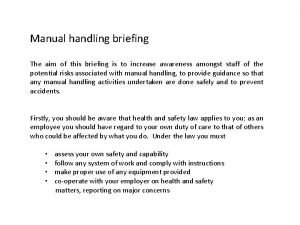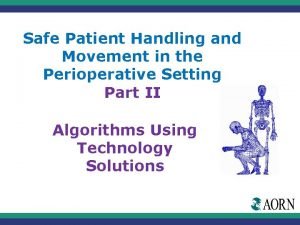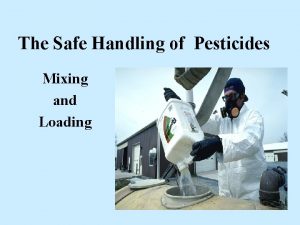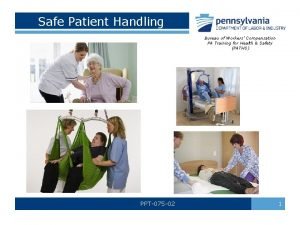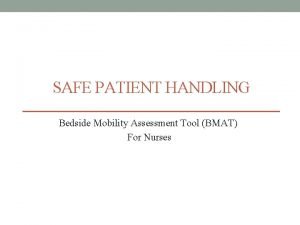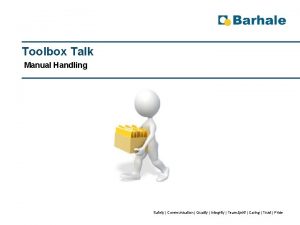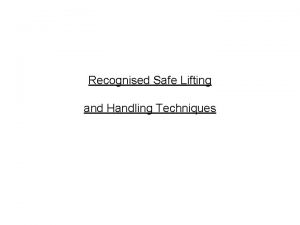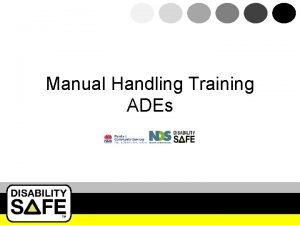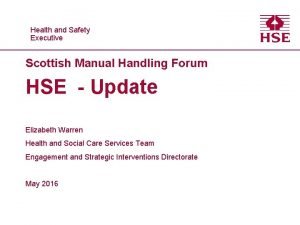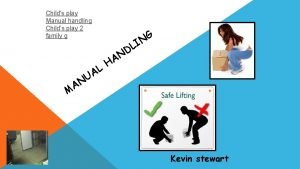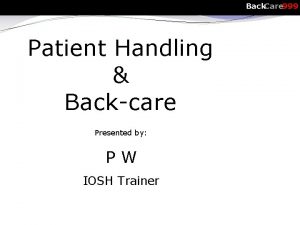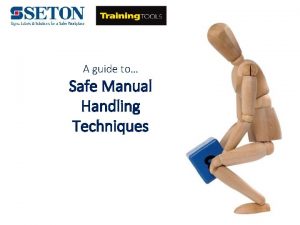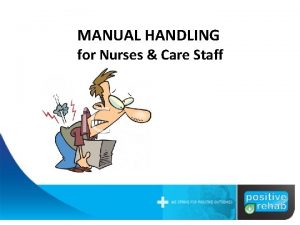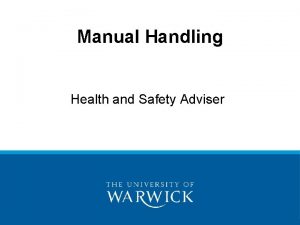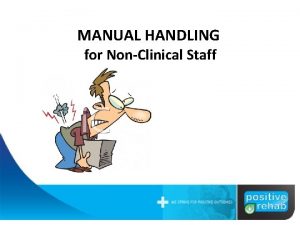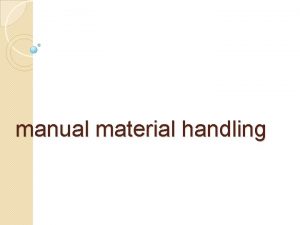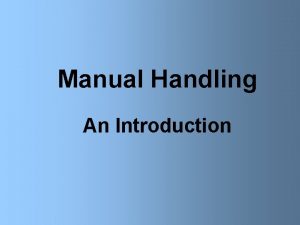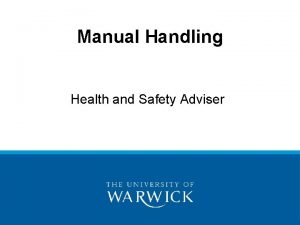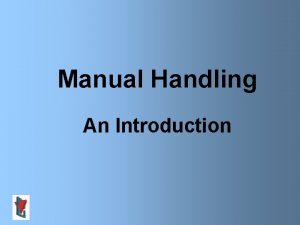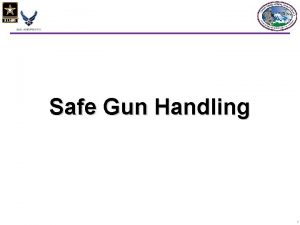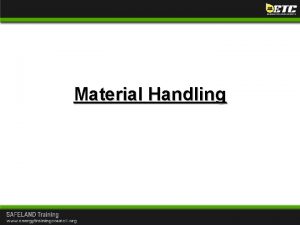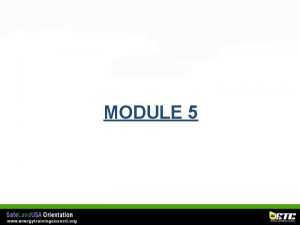A guide to Safe Manual Handling Techniques Aim

















- Slides: 17

A guide to… Safe Manual Handling Techniques

Aim of this presentation The Manual Handling Operations Regulations 1992, as amended in 2002, apply to a wide range of manual handling activities, including lifting, lowering, pushing, pulling or carrying.

What’s the problem? Manual handling injuries affect around 1. 1 per year million people An estimated 9. 3 million working days a year are lost due to work-related Musculoskeletal Disorders (MSDs)

Musculoskeletal Disorders Poor manual handling can cause Musculoskeletal Disorders (MSDs) which include problems such as low back pain, joint injuries and repetitive strain injuries.

Manual Handling Risks Some of the main areas that cause risks include: • Repetitive & Heavy Lifting • Bending & Twisting • Repeating an action too frequently • An uncomfortable working position

What should you do about it? r e d i s Consider the risks from manual handling to the health and safety of employees. t l u s Consult and involve the workforce.

Employer Duties Avoid The need for hazardous manual handling Assess The risk of injury from any hazardous manual handling Reduce The risk of injury from hazardous manual handling

Employee Duties Employees have duties too! • Inform the employer of any hazardous activities • Follow appropriate safe systems of work laid down for their safety • Make proper use of equipment provided for their safety • Ensure activities do not put others at risk

Avoiding Manual Handling Check whether you need to move it at all… ? ? Can you take the treatment to the patient, not vice versa? ? Can raw materials be piped to their point of use? Does a large work piece really need to be moved, or can the activity be done safely where it already is?

Avoiding Manual Handling Think about using handling aids… Hoists Conveyors Lift Trucks Pallet Trucks

Good Handling Techniques - Lifting Thinkbefore Think lifting/handling lifting and handling Is help needed with the load? Can handling aids be used? Where will the load be placed?

Good Handling Techniques - Lifting Keep the load close to the waist with the heaviest side next to the body

Good Handling Techniques - Lifting Adopt a stable position with feet apart and one leg slightly forward to maintain balance Get a good hold and start in a good posture

Good Handling Techniques - Lifting Avoid twisting the back or leaning sideways Don’t flex the back any further while lifting

Good Handling Techniques - Lifting Keep the head up when handling Move smoothly and don’t lift or handle more than can be easily managed

Good Handling Techniques - Lifting Put the load down, then adjust. Slide into desired position

General Risk Assessment Guidelines Source: HSE
 Aim of manual handling
Aim of manual handling Safe patient handling algorithms
Safe patient handling algorithms Safe handling of pesticides
Safe handling of pesticides Safe patient handling
Safe patient handling Bmat level 3
Bmat level 3 12 golden rules of gun safety
12 golden rules of gun safety Us powerboating
Us powerboating St lawrence & atlantic railroad
St lawrence & atlantic railroad Safe feed safe food
Safe feed safe food Safe people safe places
Safe people safe places Tool box talk manual handling
Tool box talk manual handling What do the principles of manual handling help you to do
What do the principles of manual handling help you to do Kinetic lifting principle
Kinetic lifting principle Manual handling
Manual handling Mhra
Mhra Child's play manual handling
Child's play manual handling The orthodox lift is:
The orthodox lift is: Manual handling
Manual handling
